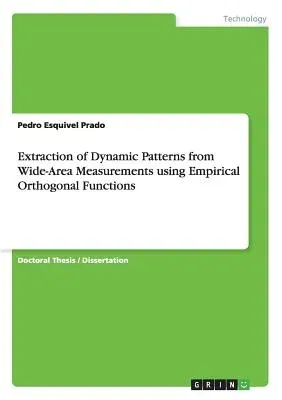Doctoral Thesis / Dissertation from the year 2010 in the subject
Electrotechnology, grade: Identificación de patrones, University of
Guadalajara (CINVESTAV - Centro de Investigación y de Estudios Avanzados
del Instituto Politécnico Nacional Unidad Guadalajara), course: Sistemas
eléctricos de potencia, language: English, abstract: Multi-variate
statistical data analysis techniques offer a powerful tool for analyzing
power system response from measured data. In this thesis, a
statistically-based, data-driven framework that integrates the use of
complex wavelet empirical orthogonal function (EOF) analysis and the
method of snapshots is proposed to identify and extract dynamically
independent spatio-temporal patterns from time synchronized data. The
procedure allows identification of the dominant spatial and temporal
patterns in a complex data set and is particularly well suited for the
study of standing and propagating features that can be associated with
electromechanical oscillations in power systems. It is shown that, in
addition to providing spatial and temporal information, the method
improves the ability of conventional correlation analysis to capture
temporal events and gives a quantitative result for both the amplitude
and phase of motions, which are essential in the interpretation and
characterization of transient processes in power systems. The efficiency
and accuracy of the developed procedures for capturing the temporal
evolution of the modal content of data from time synchronized phasor
measurements of a real event in México is assessed. Results show that
the proposed method can provide accurate estimation of nonstationary
effects, modal frequency, time-varying mode shapes, and time instants of
intermittent or irregular transient behavior associated with abrupt
changes in system topology or operating conditions.


